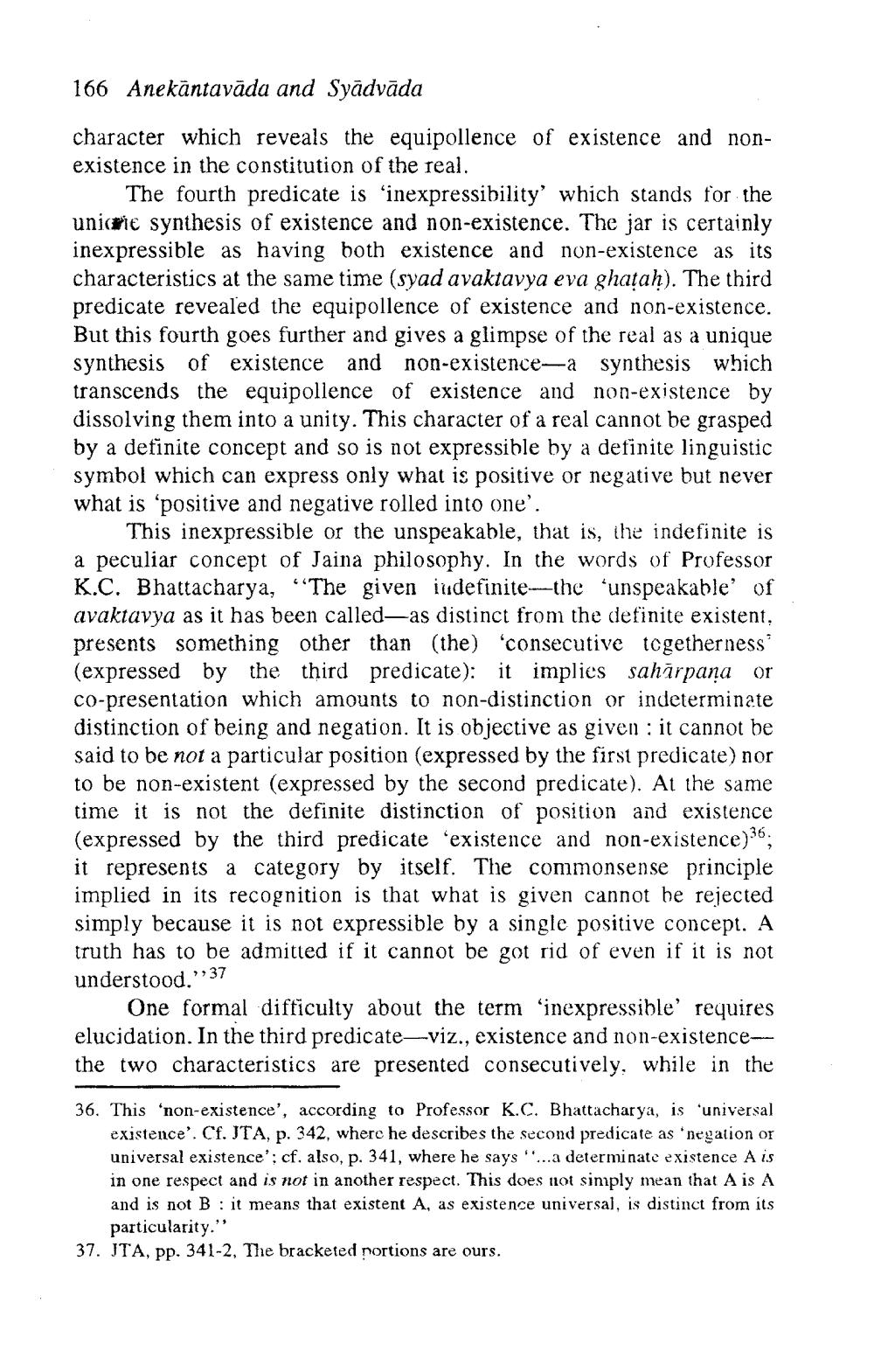________________
166 Anekāntavāda and Syādvāda
character which reveals the equipollence of existence and nonexistence in the constitution of the real.
The fourth predicate is 'inexpressibility' which stands for the unice synthesis of existence and non-existence. The jar is certainly inexpressible as having both existence and non-existence as its characteristics at the same time (syad avaktavya eva ghatah). The third predicate revealed the equipollence of existence and non-existence. But this fourth goes further and gives a glimpse of the real as a unique synthesis of existence and non-existence-a synthesis which transcends the equipollence of existence and non-existence by dissolving them into a unity. This character of a real cannot be grasped by a definite concept and so is not expressible by a definite linguistic symbol which can express only what is positive or negative but never what is 'positive and negative rolled into one'.
This inexpressible or the unspeakable, that is, the indefinite is a peculiar concept of Jaina philosophy. In the words of Professor K.C. Bhattacharya, "The given indefinite--the unspeakable of avaktavya as it has been called—as distinct from the definite existent, presents something other than (the) 'consecutive togetherness (expressed by the third predicate): it implies sahārpana or co-presentation which amounts to non-distinction or indeterminate distinction of being and negation. It is objective as given : it cannot be said to be not a particular position (expressed by the first predicate) nor to be non-existent (expressed by the second predicate). At the same time it is not the definite distinction of position and existence (expressed by the third predicate 'existence and non-existence)36; it represents a category by itself. The commonsense principle implied in its recognition is that what is given cannot be rejected simply because it is not expressible by a single positive concept. A truth has to be admitted if it cannot be got rid of even if it is not understood.":37
One formal difficulty about the term 'inexpressible' requires elucidation. In the third predicate—viz., existence and non-existencethe two characteristics are presented consecutively, while in the
36. This ‘non-existence', according to Professor K.C. Bhattacharya, is 'universal
existence'. Cf. JTA, p. 342, where he describes the second predicate as negation or universal existence'; cf. also, p. 341, where he says "....a determinate existence A is in one respect and is not in another respect. This does not simply mean that A is A and is not B: it means that existent A, as existence universal, is distinct from its
particularity." 37. JTA, pp. 341-2, The bracketed portions are ours.




